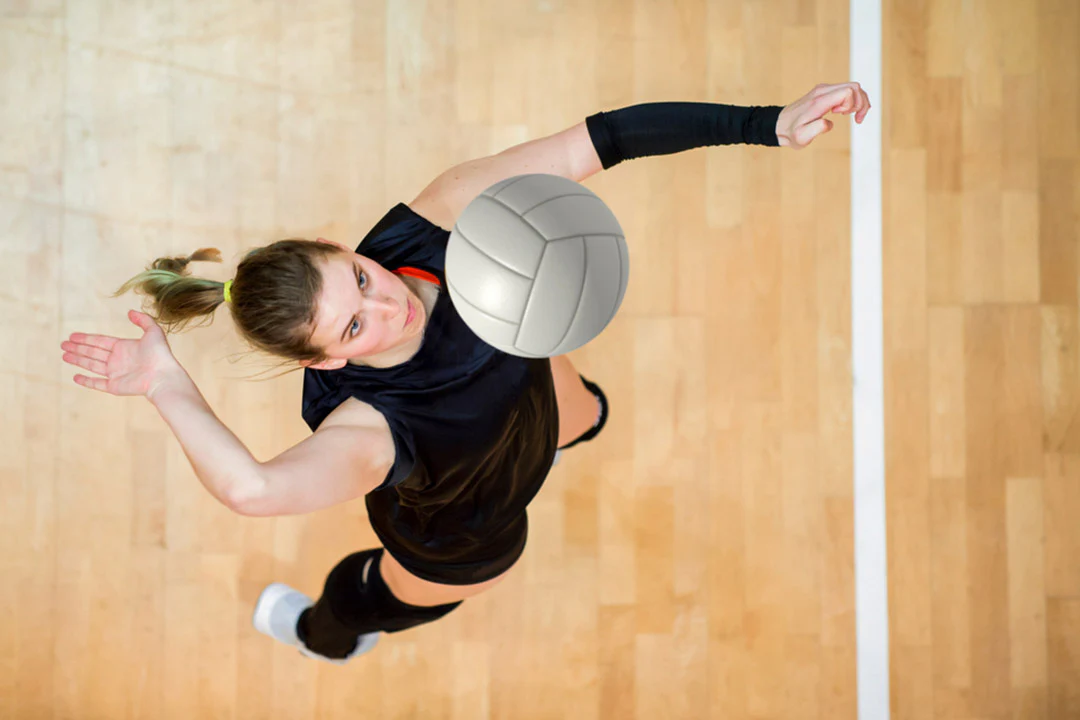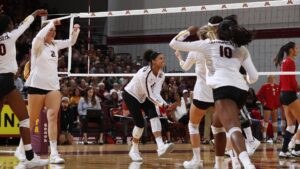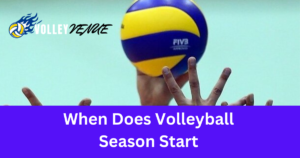Table of Contents
There are three main types of volleyball serve. If your position is to serve volleyball on the court, you have to read this article for a better understanding and a better implementation. Serving is a basic and super important skill of volleyball that can help you to win games. If you are trying to make a chance for a score in your team, you need strong and accurate serving skills. It helps you make chances to score, and also it can make the other team struggle. In this article, here we are showing you an easy guide. From this easy guide, you will learn step-by-step how to serve a volleyball with power, then you will be able to serve a volleyball with power. So, Stay with this.
Key Takeaways
- Serving is a key skill in volleyball that affects your game.
- This guide teaches how to serve accurately and powerfully.
- Learn about different serves like overhand, underhand, and jump serves, as well as spin and placement techniques.
- Drills and exercises are included to improve serving skills.
- Whether you’re a beginner or a pro, this guide helps you excel in volleyball.
Mastering the Fundamentals of Volleyball Serving
In volleyball, serving is the only moment when a player has full control over the ball. A strong and accurate serve can mess up the other team’s plans, making it hard for them to play well or even earn a direct point. Knowing how important a good serve is can make a big difference for any player, as it can change the flow and strategy of the game.
Understanding the Importance of a Powerful Serve
There is only one thing that can make chances to score and change the game it is a strong and accurate serve. A strong and accurate serve it can break the other team’s plans and give your team chances to score and take control. When you are aiming at a certain area or making it hard for the other team to pass, a good serve becomes a powerful tool for your team.
Developing the Proper Serving Stance
- Stand with one foot a bit in front of the other, and keep your feet apart.
- Balance your weight on the front part of your feet.
- Relax your upper body.
- Hold your tossing arm elbow up high.
- Keep your serving arm elbow back, ready to swing hard.
Executing the Overhand Serve
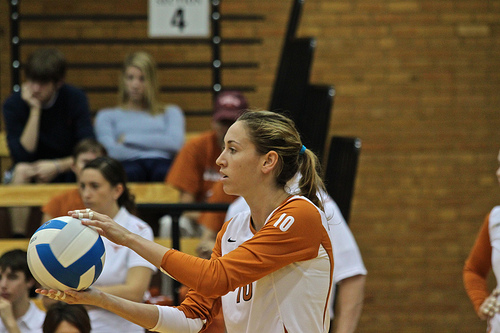
Overhand serve is a very common as well powerful serve in volleyball. If you want to do or become an expert on overhand serve, you need to learn how to toss the ball well, swing your arm with power, hit the ball consistently, and you have to adjust your serve based on your position on the court..
Tossing the Ball for an Effective Serve
Start by tossing the ball slightly in front of your body and above your head. The ideal toss will allow you to swing your arm back and make contact with the ball at the point where your arm is fully extended.
Generating Power through Proper Arm Swing
As the ball reaches its peak, swing your serving arm back, keeping your elbow high and your wrist firm. Snap your arm forward, making contact with the ball with a smooth, controlled motion. Focus on generating power through your shoulder and arm swing to deliver a strong, consistent serve.
Ensuring Consistent Contact with the Ball
Maintaining a consistent contact point with the ball is crucial for accuracy and control. Aim to make contact with the ball at the same spot on your hand each time, using your firm wrist and stable arm position to ensure a reliable point of contact.
Adjusting Your Serve Based on Court Position
Based on where your opponents are and your team’s plan, you might need to change how you serve. Try different heights, speeds, and spins with your overhand serve to surprise the other team and create good chances for your team.
Incorporating the Underhand Serve
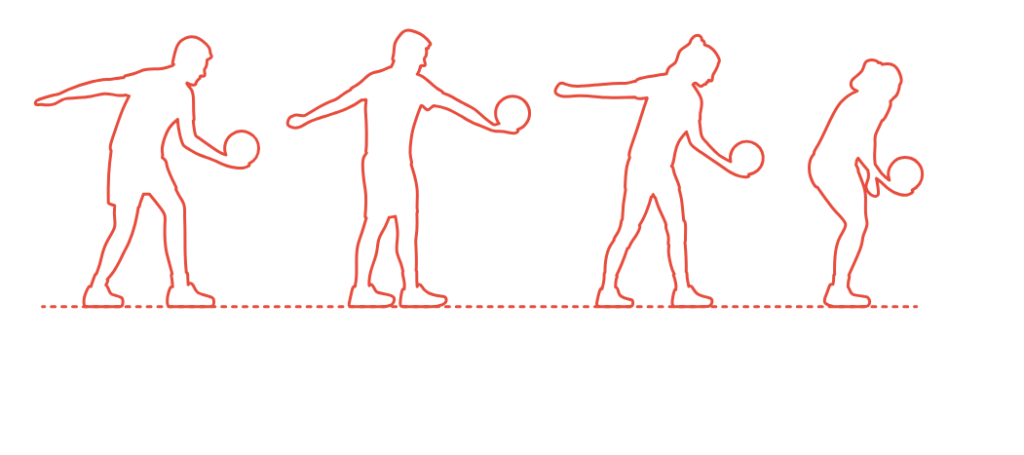
While the overhand serve is the most common in volleyball, at the same time the underhand serve can also be useful and valuable. The underhand serve is better for beginners or recreational in volleyball they often use it. Because underhand service needs less power and it is easier to control. However, it can also be a smart choice in competitive play, especially when aiming for certain spots on the court or when you need a steady, low-risk serve.
When to Use an Underhand Serve
The underhand serve can be a useful option in several scenarios. It may be a good choice when facing a strong opposing server, as the lower-powered underhand serve can be easier to handle. Additionally, the underhand serve can be an effective way to target open spaces on the court or to challenge the receiving team’s ability to pass accurately.
Mastering the Underhand Serving Technique
If you want to get better at underhand serve, you have to do some things like stand with your strong foot a bit in front, knees bent, and weight balanced. Then Keep the ball at your waist with your hand under it. Next, swing your serving arm backward, keeping your elbow close to your body. Then, swing your arm forward, hitting the bottom of the ball. Make sure your movements are smooth and consistent with each serve, aiming for accuracy and control. With practice, you can master the underhand serve and contribute to your team’s success on the court.
Serve the Volleyball with Top Spin Strategies
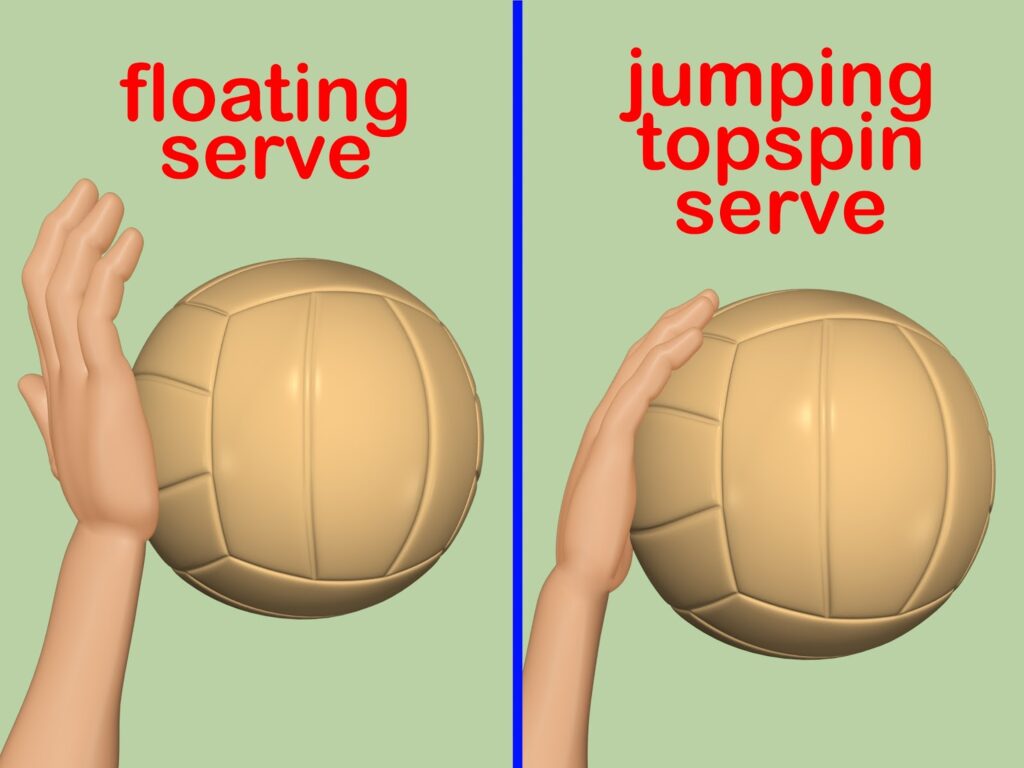
Besides hitting the ball hard, you can also add spin and aim your serve in the right spot to make it better. When you put topspin on the ball, it drops faster as it gets close to the net, which makes it harder for the other team to return.
Adding Topspin for Increased Difficulty
To put topspin on the ball, just flick your wrist forward when you hit it. This makes the ball spin forward, so it drops faster, making it tougher for the other team to handle.
Mastering at Top Spin
The topspin serve is a strong and tricky volleyball serve. It makes the ball drop quickly, which is hard for the other team to handle. Here’s how to do it:
- Stand with your feet apart, one foot in front of the other.
- Hold the ball up high with your hand.
- Toss the ball straight up in the air.
- Swing your hand up and hit the ball with your palm.
- Flick your wrist when you hit to make the ball spin.
- Keep swinging your arm after you hit the ball.
The topspin serve is strong because the spin makes the ball drop fast, making it tough for the other team.
How to Serve a Volleyball
To serve a volleyball well, follow these steps:
- Stand right: Put your strong foot a bit in front, bend your knees, and balance your weight evenly.
- Toss the ball: Throw it a little in front and above your head so it’s at the right height for your serve.
- Swing your arm: Move your serving arm back, keep your elbow up, and your wrist steady. When the ball is highest, swing your arm forward and hit it when your arm is straight.
- Hit it right: Try to hit the ball well, and keep swinging your arm to give it power and direction.
- Aim where you want: Picture where you want the ball to go on the other side of the court and serve towards that spot.
If you learn these steps well, you’ll have a strong and reliable serve that can help your team win games.
Serving Drills for Consistent Improvement
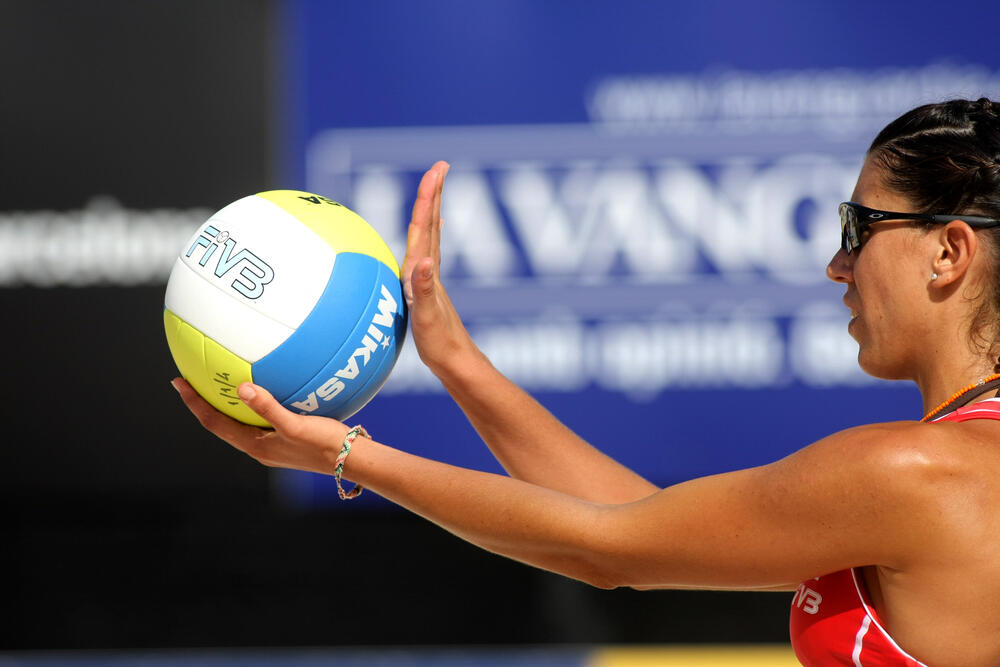
If you want to be better at serving in volleyball, you need to do specific drills during your practice time. Using a machine that tosses the ball for you and doing drills where you practice receiving serves can help. These drills can make your serving more steady and improve how well you serve overall.
Practicing with a Serve Toss Machine and Serve-Receive Drills
Practicing with a Serve Toss Machine and Serve-Receive Drills can help you improve your volleyball skills. Use a machine that tosses the ball like in a real game, and focus on serving smoothly. This helps with your timing and how well you hit the ball.
Serve-receive drills are also important. You serve to a teammate, who then passes or sets the ball back. This helps you understand how your serve affects the other team and lets you make it better.
Mental Strategies for Effective Serving
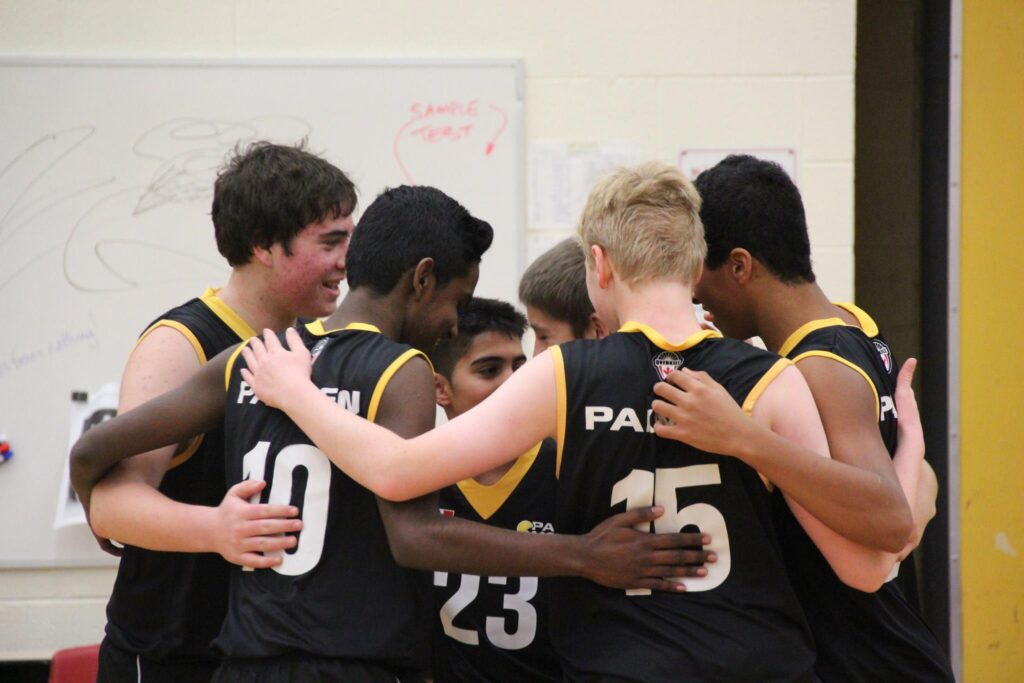
Serving a volleyball effectively not only requires physical skill but also a strong mental approach. Building confidence and overcoming serving anxiety can be crucial for consistently delivering powerful and accurate serves.
Building Confidence and Overcoming Serving Anxiety
Having confidence is really important for serving in volleyball. If you’re worried or unsure about your serve, it can make you play worse. To feel more confident, think about times when you served well and picture yourself doing a perfect serve. Remember it you have to do all your hard work and believe in yourself.
Also, try to find out why you’re feeling nervous when you are serving or practicing. Is it because you’re scared of messing up or feeling pressure to do well? When you know why you’re nervous, you have to try some things like taking deep breaths, telling yourself with a positive attitude and things, and imagining yourself serving perfectly to help you feel better.
Developing a Pre-Serve Routine
Having a regular routine before you serve can help you feel ready and sure about each service. This routine might include taking a few deep breaths, checking your serving technique in your head, and saying something positive to yourself. Doing the same routine every time helps your mind and body get ready to serve well.
Remember, serving in volleyball isn’t just about your body – it’s also about your mind. If you build your confidence and stick to your routine, you can handle any nerves and serve better in games.
Troubleshooting Common Serving Issues
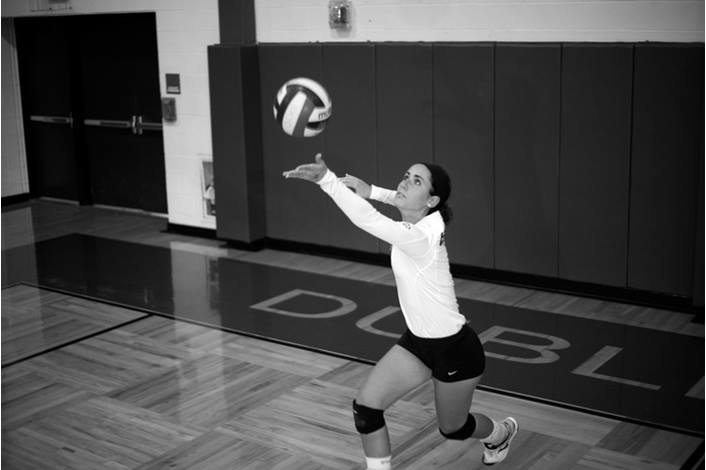
Even the most experienced volleyball players can encounter challenges with their serving technique. Two common issues that can impact serving performance are inconsistent ball toss and timing/footwork problems.
Addressing Inconsistent Ball Toss
A big problem when serving is not tossing the ball the same way every time. This makes it hard to serve well. To fix this, practice tossing the ball in the same way over and over again. Aim to toss it to the same spot and height in front of you. You have to make sure your hand and arm move smoothly and it is under your control. Using a drill can help you get better results at tossing the ball perfectly, like aiming for a target or using a machine that helps with tossing.
Correcting Timing and Footwork Issues
You have to control timing and footwork because it is really important for serving well in volleyball. If your timing is off or your footwork isn’t consistent, it can mess up your serve.
To get better at timing and footwork, watch how your body moves when you serve. Make sure your step and shift in weight match up with your arm swing and hitting the ball. Practice drills that help you coordinate your footwork, like stepping side to side or jumping when you serve.
Remember, fixing problems with tossing the ball and timing/footwork takes practice. Don’t rush it, and keep working on your serving until you get it right every time.
Conclusion
In summary, getting good at serving in volleyball is super important also it can really help your team to score and win. If you follow the steps that we talked about, you can learn how to serve a volleyball well, whether you’re doing it overhand, underhand, or Top Spin.
To get better, you need to practice a lot and really focus on how you hit the ball, the spin you put on it, and where you aim. It’s also important to feel confident, have a routine before you serve, and fix any problems that you have.
Getting great at serving takes time, but if you keep working at it and stay focused, you can become a pro at serving and make a big difference for your team. So, keep practicing, stay determined, and enjoy getting better at serving!

